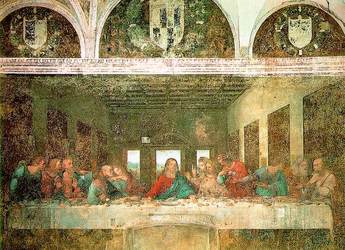 The Last Supper Leonardo Da Vinci The Last Supper Leonardo Da Vinci For the past couple of days, I have been enjoying some leave from GDS after what’s been a fairly hectic year. It’s allowed me some time to write (which I’ve not done in a personal capacity for years) and to return to some thinking about the nature of creativity and technology and a bit about people management in that context. I started my career as an arts administrator when arts administration was regarded as a “profession”. What always struck me as rather odd was that arts administrators were paid well, had full time positions and relative job security. But arts administrators cannot exist without artists who invariably struggle financially, have no job security and who were often powerless in charting the course of their own careers. During that time I remember stumbling across an organization called the Chaos Pilots who provided courses in arts administration. I always thought that was a much more fitting title. Artists don’t need administration they need some good pilots who can help them steer a course through bureaucracy (like funding applications) they need individuals who are empathetic to their work and who understand that it’s the artist and not the administration that’s important. Last week I was given a copy of Grayson Perry’s autobiography Portrait of the Artist as a Young Girl and it’s a fascinating read. While Perry is openly transvestite (and the book offers a brilliant insight into his motivation for that lifestyle choice) what comes alive most in his writing is the creative process that drives his choice of both medium and message. At the core it’s about complex problem solving, his own desires, his emotional intelligence and his incredible talent. When I first met people like @jaggeree, @tomskitomski@countculture @paul_clarke in 2009 I had not worked with technologists/developers before. I was brought into their world through my work in the London Datastore. I can remember talking to Chris Thorpe on the balcony of City Hall and having a distinct feeling of deja vue. It struck me that he was very similar to the artists (visual and performing) that I had worked with in my early career. So it’s no surprise, for example, that Paul has turned out to be an incredible photographer (or that he has in fact studied acting in the past). The desires and motivations of technologists are very similar to those of artists something identified by Paul Graham in his book Hackers and Painters; “Like painting, most software is intended for a human audience. And so hackers, like painters, must have empathy to do really great work. You have to be able to see things from the user’s point of view…..What hackers and painters have in common is that they are both makers. Along with composers, architects and writers, what hackers and painters are trying to do is make good things”  So if hackers are the new creatives what challenges do they pose for our future organisations? Traditional management approaches will not be fit for purpose because no more than it’s possible to administer artists it won’t be possible to “manage” these creatives. They are largely driven by the desire to fix problems, create beautiful things and make the world a better place. These are not always the values of the bureaucracy (private or public). Bureaucracies may therefore need a crash course in piloting fairly soon if they want to attract the brightest and best to help steer their course for a successful landing.
0 Comments
Your comment will be posted after it is approved.
Leave a Reply. |
Details
Categories
All
Archives
August 2023
|
 RSS Feed
RSS Feed